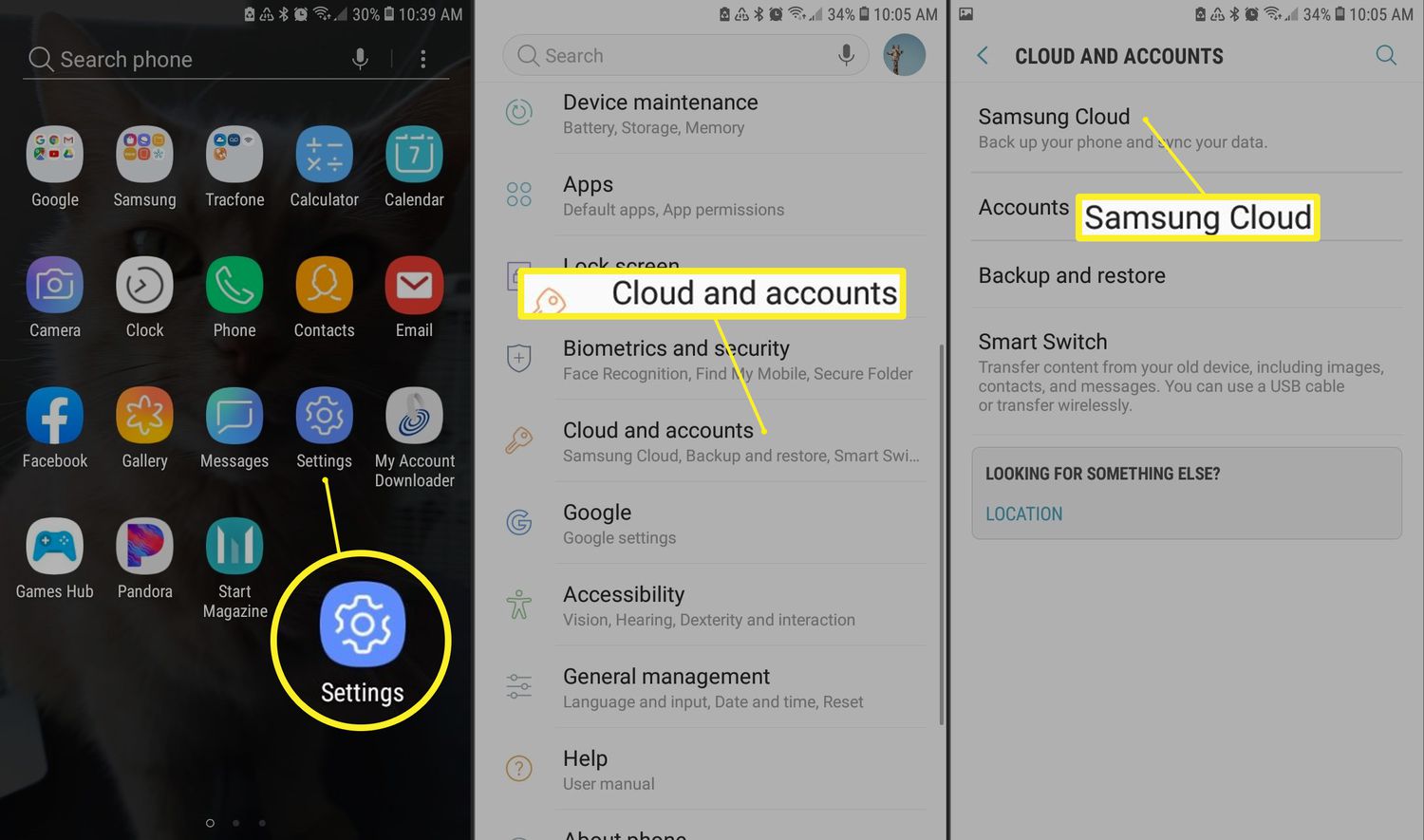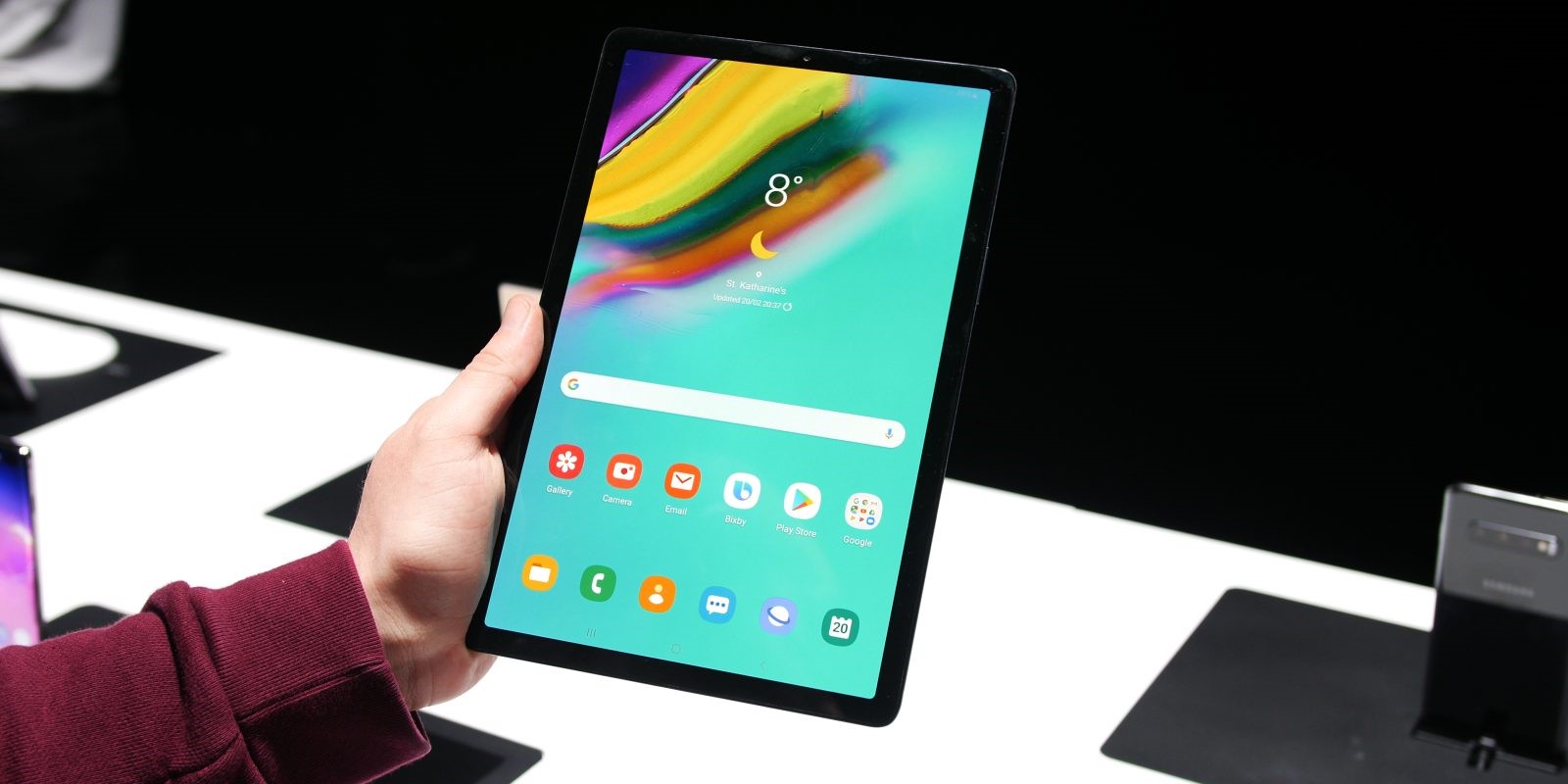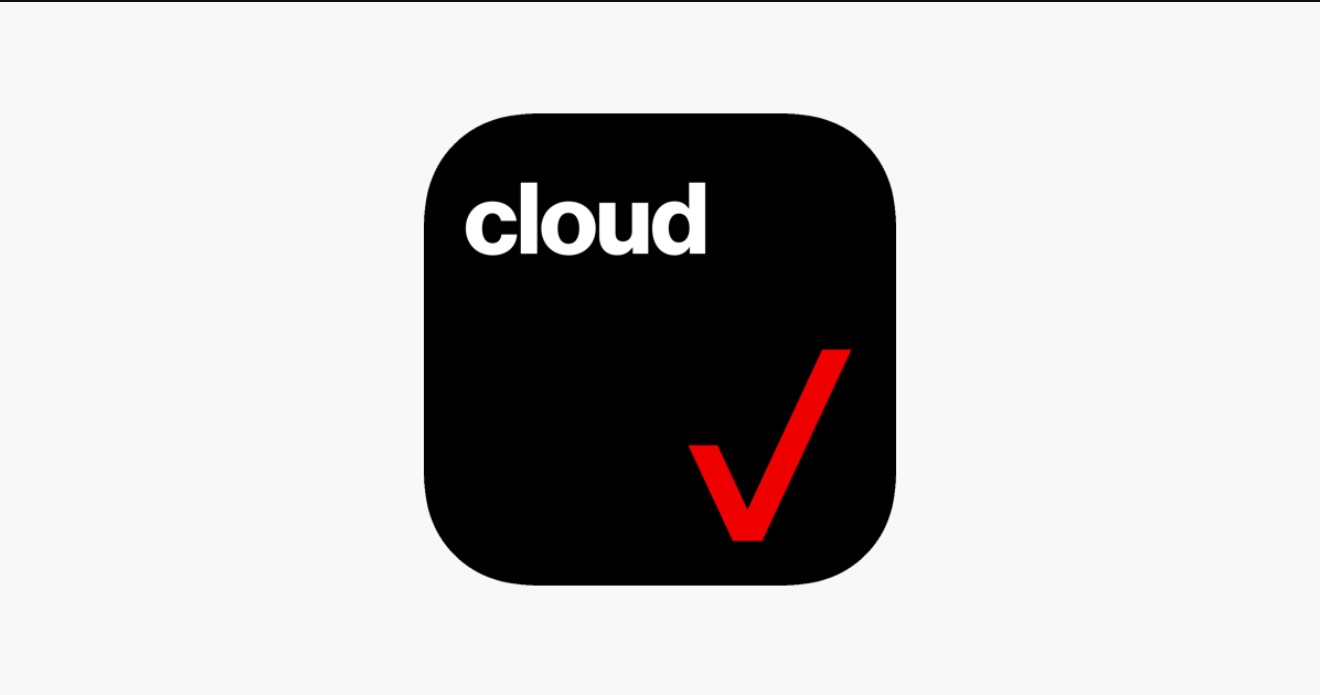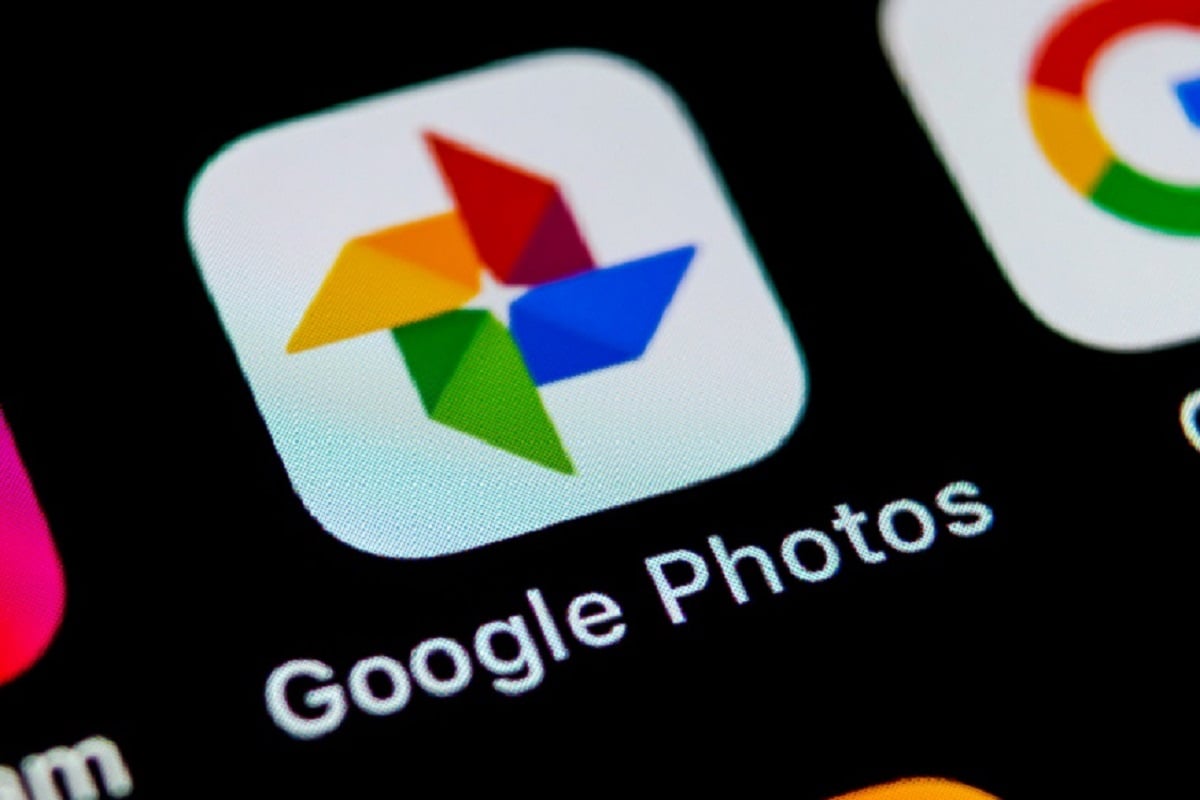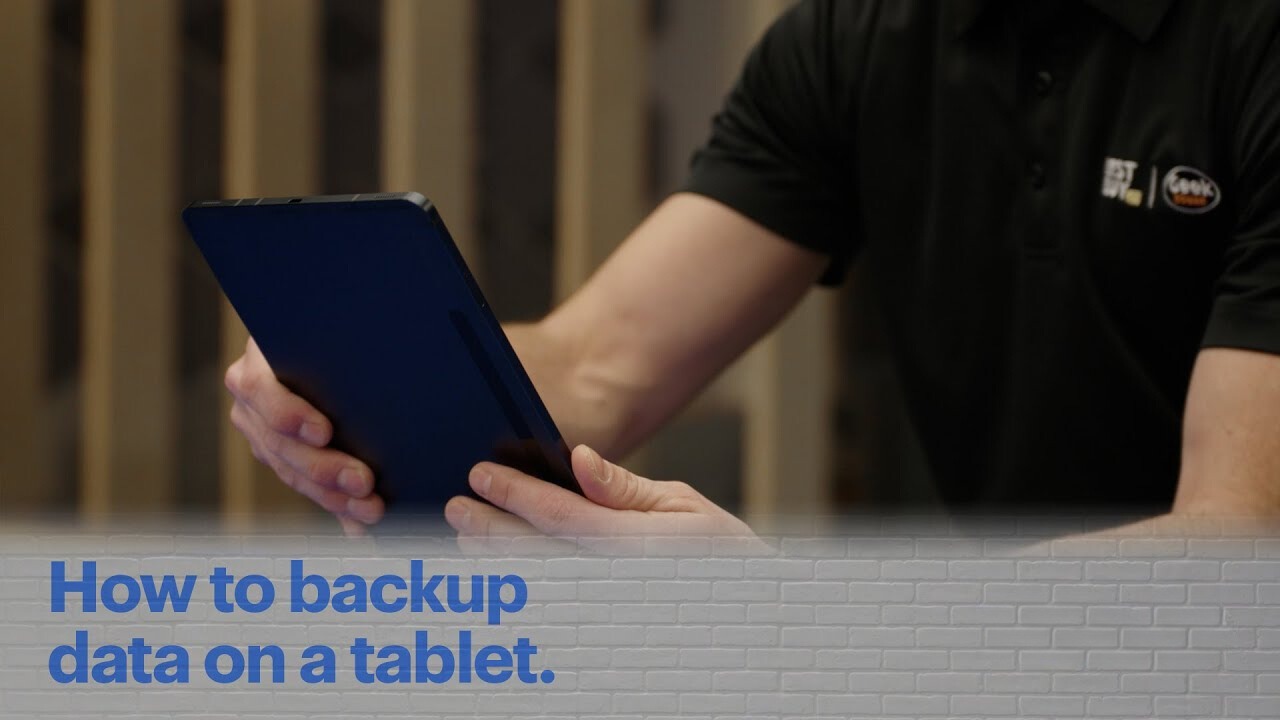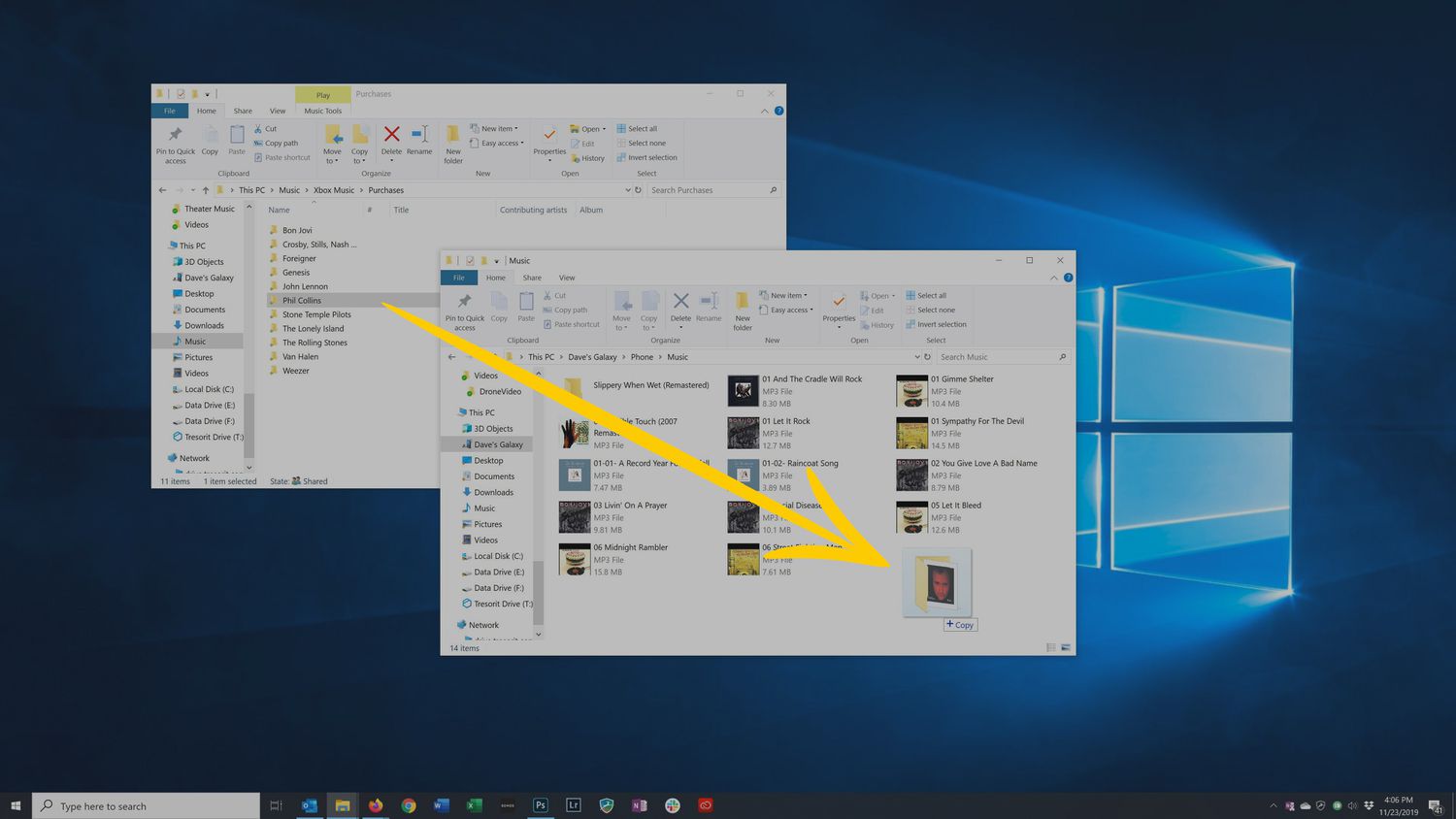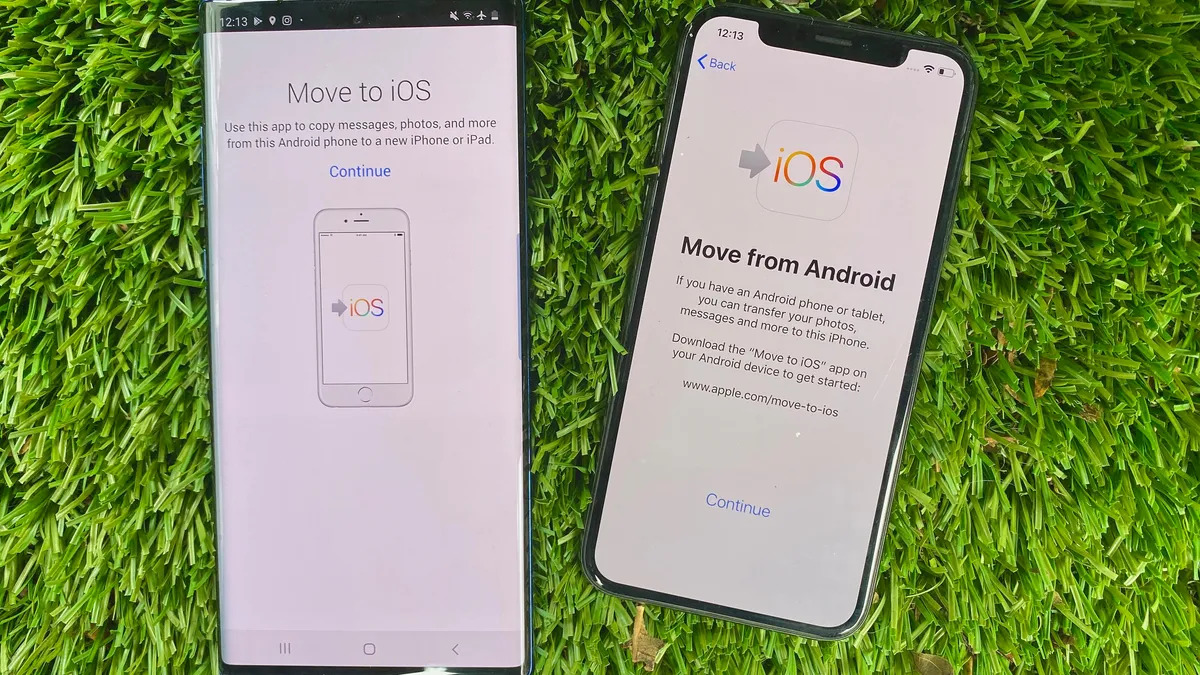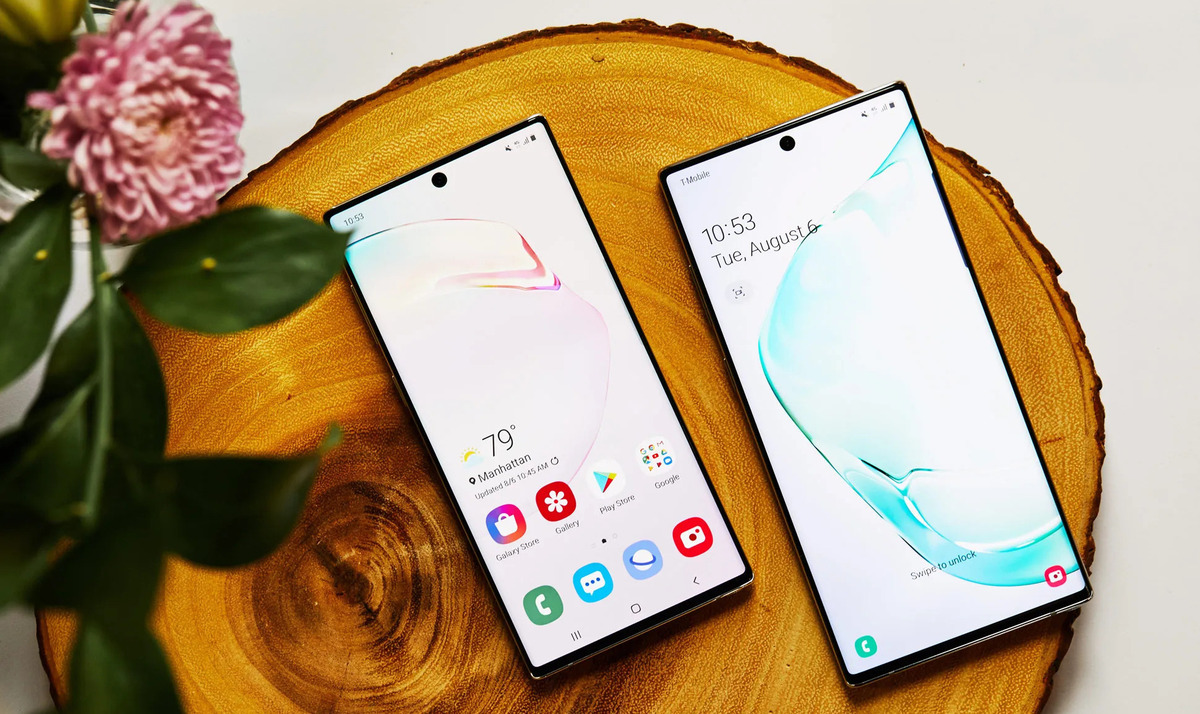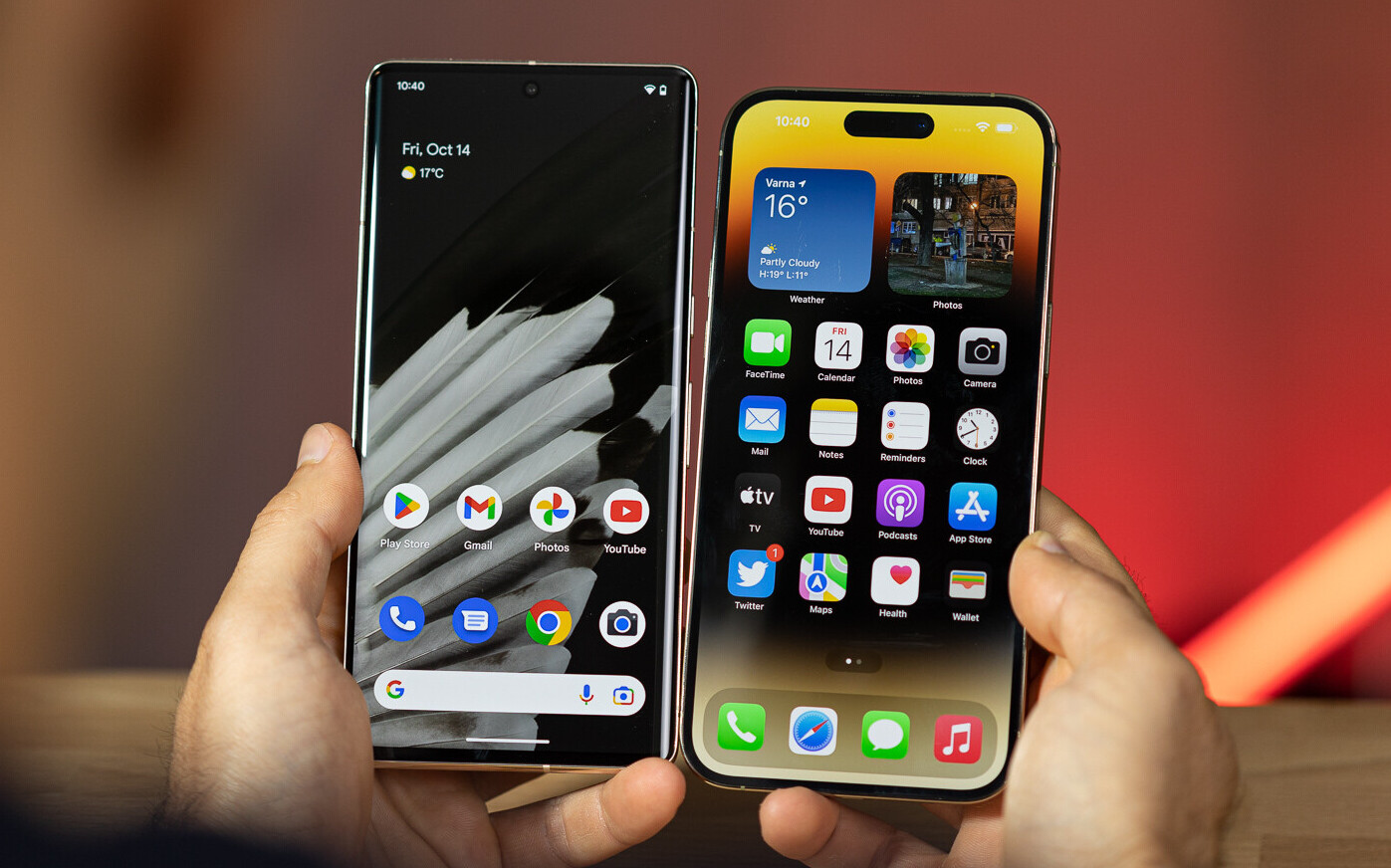Introduction
Welcome to the digital age, where the cloud has become an indispensable part of our everyday lives. With the growing reliance on smartphones and the increasing need for data storage and access on the go, utilizing the cloud on your Android device has never been more important. Whether you want to store and share documents, back up your photos and videos, or collaborate with others on projects, the cloud offers a convenient and secure solution.
So, what exactly is the cloud? In simple terms, it refers to a network of servers that are connected to the internet and used to store and manage data. Unlike traditional methods of storing files on physical devices like hard drives or flash drives, the cloud allows you to access your data from anywhere with an internet connection. This means that you no longer have to carry around a multitude of devices or worry about losing important files.
Using the cloud on your Android device brings numerous advantages. One of the key benefits is the ability to free up storage space on your device. With limited internal storage on most smartphones, offloading data to the cloud ensures that your device runs smoothly and efficiently. Additionally, the cloud provides a convenient way to back up your files in case your device gets lost, stolen, or damaged. You can also easily share files with others, collaborate on projects, and access your data across multiple devices, making it a versatile solution for both personal and professional use.
Setting up cloud services on your Android device is simple and straightforward. This article will guide you through the process of accessing the cloud on your Android device, highlighting popular services such as Google Drive, Dropbox, Microsoft OneDrive, Amazon Drive, and iCloud. Whether you already have a preferred cloud service or are exploring your options, you’ll find everything you need to know to make the most of the cloud on your Android device.
What is the Cloud?
The cloud is a term that has become increasingly common in today’s digital landscape. It refers to a network of servers that are connected to the internet and used to store and manage data. These servers are typically located in remote data centers and are maintained by cloud service providers.
Unlike traditional methods of storing data on physical devices like hard drives or flash drives, the cloud allows users to store their files remotely and access them through an internet connection. This means that you can access your data anytime, anywhere, as long as you have an internet-enabled device.
So why is the cloud so popular? There are several advantages to using cloud storage. One of the main benefits is the ability to free up storage space on your local devices. With the limited storage capacity of smartphones, tablets, and laptops, offloading files to the cloud can help declutter your devices and ensure they run smoothly.
Another advantage of the cloud is the ability to easily share files with others. Instead of sending large attachments through email or physically transferring files using external storage devices, you can simply share a link to the cloud file. This makes collaboration on projects or sharing important documents with colleagues or friends much more streamlined.
Additionally, the cloud provides a convenient backup solution. By storing your files in the cloud, you can protect them from data loss in the event of device damage, loss, or theft. Cloud service providers often have measures in place to ensure the security and integrity of your data, making it a reliable backup option.
The cloud is not just limited to storing files. It also enables users to access a wide range of applications and services remotely. This means you can run software, access databases, and use various tools without the need to install them locally.
Overall, the cloud offers a flexible and scalable solution for data storage and access. Whether you are an individual user or a business, the cloud provides a convenient and efficient way to manage and secure your digital assets.
Advantages of Using the Cloud on Android
Using the cloud on your Android device offers numerous advantages that can greatly enhance your digital experience. Whether you are a busy professional or a casual user, here are some key benefits of utilizing the cloud on your Android device:
1. Storage Space Optimization: Android devices often come with limited internal storage. By leveraging cloud storage services, you can free up space on your device by offloading files, such as photos, videos, and documents, to the cloud. This ensures that your device runs smoothly and efficiently without the need to constantly manage storage space.
2. Data Backup and Recovery: Losing your Android device or experiencing a hardware failure can be a nightmare if you haven’t backed up your data. With the cloud, you can automatically and securely back up your important files, contacts, and settings. This enables you to easily recover your data when needed, ensuring that you never lose valuable files or information.
3. Seamless Syncing Across Devices: Do you use multiple Android devices, such as a smartphone, tablet, and laptop? The cloud allows you to seamlessly sync your files, apps, and settings across all your devices. This means that you can access your documents, photos, and other data from anywhere, without the need for manual transfers or syncing.
4. Easy File Sharing and Collaboration: The cloud makes file sharing and collaboration a breeze. Instead of emailing large attachments, you can simply share a link to a cloud file or folder. This enables seamless collaboration on projects, as multiple users can access, edit, and comment on shared files in real-time, enhancing productivity and teamwork.
5. Enhanced Security and Data Integrity: Cloud storage providers often employ high-level security measures to protect your data, such as encryption and multi-factor authentication. This ensures the safety and integrity of your files, giving you peace of mind knowing that your data is secure. Additionally, cloud services regularly back up your files, providing an extra layer of protection against data loss due to hardware failure or accidental deletion.
6. Access to Web-Based Applications: Many cloud services offer web-based applications that you can access directly from your Android device. This means you can use productivity tools, such as word processors or spreadsheets, without the need to install additional software on your device. This not only saves storage space but also ensures that you always have the latest version of the application without having to manually update it.
By leveraging the power of the cloud on your Android device, you can optimize storage space, safeguard your data, collaborate with ease, and enjoy seamless syncing across devices. These advantages make the cloud an invaluable tool for both personal and professional use, enhancing your productivity and convenience in the mobile era.
Setting up Cloud Services on Your Android Device
Setting up cloud services on your Android device is a straightforward process that allows you to access your files, photos, and other data from anywhere, at any time. Here are the steps to set up popular cloud services on your Android device:
- Adding Your Google Account to Your Android Device: If you have an Android device, chances are you already have a Google account. To integrate Google’s cloud services, such as Google Drive and Google Photos, simply go to your device’s Settings, select Accounts, and add your Google account. This will enable automatic syncing of your data across devices.
- Accessing Google Drive: Google Drive is a popular cloud storage service that offers 15GB of free storage space. To access Google Drive on your Android device, open the Google Drive app or navigate to drive.google.com in your web browser. From here, you can upload, organize, and share files and folders. You can also download the Google Drive app from the Play Store to access your files directly from your device’s file manager.
- Using Google Photos: Google Photos is a cloud-based photo and video storage service offered by Google. It allows you to automatically back up your photos and videos to the cloud, organize them into albums, and share them with others. To access Google Photos on your Android device, open the Google Photos app or go to photos.google.com in your web browser. You can also enable automatic photo and video backup by going to the app’s settings.
- Using Dropbox on Android: To set up Dropbox on your Android device, download the Dropbox app from the Play Store and create a Dropbox account. Once installed, you can upload and access files, share folders with others, and enable automatic camera uploads to back up your photos and videos.
- Using Microsoft OneDrive on Android: Microsoft OneDrive offers cloud storage and syncing services. To set up OneDrive on your Android device, download the OneDrive app from the Play Store and sign in with your Microsoft account. After that, you can upload files, access documents, and collaborate with others using Office Online integration.
- Using Amazon Drive on Android: Amazon Drive provides cloud storage for Amazon customers. To access Amazon Drive on your Android device, download the Amazon Drive app from the Play Store and sign in with your Amazon account. Once logged in, you can upload and manage your files, create folders, and share content with others.
- Using iCloud on Android: While iCloud is primarily designed for Apple devices, you can still access some iCloud services on your Android device. To set up iCloud on your Android, download and install the iCloud for Android app from the Play Store. This app allows you to access your iCloud Photos, iCloud Drive, and even iCloud Mail on your Android device.
- Other Cloud Services Available for Android: Besides the popular cloud services mentioned above, there are numerous other options available for Android users. Some notable examples include Box, Mega, and pCloud. Simply download the respective apps from the Play Store, create an account, and follow the instructions to set up and start using these services on your Android device.
Once you have set up your preferred cloud services on your Android device, you can enjoy the convenience of accessing your files, photos, and data across devices, while ensuring easy sharing and backup options. Take full advantage of the cloud to enhance your productivity and streamline your digital workflow.
Adding Your Google Account to Your Android Device
Adding your Google account to your Android device is the first step to unlock the full potential of Google’s cloud services, such as Google Drive and Google Photos. By connecting your Google account, you can seamlessly sync your data, access your files, and take advantage of various Google services. Here’s how you can add your Google account to your Android device:
- Open the Settings app on your Android device. You can usually find it in the app drawer or by swiping down from the top of the screen and tapping the gear icon.
- Scroll down and look for the “Accounts” or “Users & accounts” option and tap on it.
- Depending on your device, you may see different account types listed. Look for the “Add account” option and tap on it.
- From the list of available account types, select “Google”. If you already have a Google account, you can sign in with your existing credentials. Otherwise, tap on “Create account” to set up a new Google account.
- Follow the on-screen prompts to sign in or create a new account. This may include entering your email address, password, and other personal information.
- Once you’ve signed in or created your Google account, you’ll be asked to review and accept the terms and conditions. Read through the terms and tap “Accept” to proceed.
- You may also be given the option to set up additional security features, such as two-factor authentication, to enhance the security of your Google account. It’s recommended to enable these features for added protection.
- After completing the setup process, your Google account will be added to your Android device, and you’ll be able to access Google services like Google Drive, Google Photos, Gmail, and more.
Once your Google account is added to your Android device, you can enable sync options to ensure that your data, such as contacts, calendar events, and app data, are automatically synced across devices. You can customize the sync settings by going to “Settings” > “Accounts” or “Users & accounts” > “Google” and selecting which items you want to sync.
Adding your Google account to your Android device opens up a world of possibilities, allowing you to access and manage your files, photos, and data seamlessly. It is the first step to unlocking the full potential of the cloud on your Android device.
Accessing Google Drive
Google Drive is a powerful cloud storage service provided by Google that allows you to store, organize, and share your files and folders. By accessing Google Drive on your Android device, you can not only free up storage space but also enjoy seamless access to your files from anywhere, at any time. Here’s how you can access Google Drive on your Android device:
- Ensure that you have added your Google account to your Android device. If you haven’t done so already, refer to the previous section on “Adding Your Google Account to Your Android Device” for instructions.
- Open the Google Drive app on your Android device. If you don’t have the app installed, you can download it from the Google Play Store.
- Upon opening the app, you will be prompted to sign in with your Google account. Enter your email address and password, then tap “Next” to proceed.
- Once you have successfully signed in, you will be greeted with the main interface of Google Drive. Here, you can view your files, folders, and recent activity.
- To upload files or folders to Google Drive, tap on the “+” or “Add” button, usually represented by a plus icon. From here, you can choose to upload files from your device’s storage or create new files using Google’s suite of productivity tools, such as Google Docs, Google Sheets, and Google Slides.
- To access and open a file or folder, simply tap on its name or icon. Supported file types, such as documents, spreadsheets, presentations, images, and more, can be viewed and edited directly within the Google Drive app, or you can choose to open them with other installed apps on your device.
- To organize your files and folders, you can create new folders, move files between folders, and rename or delete files as needed. Simply tap and hold on a file or folder to reveal the available actions.
- Google Drive also allows you to share files and folders with others. To share a file, select it and tap on the “Share” button. You can then choose whether to share via email, social media, or create a shareable link. You can also assign specific permissions, such as view-only or editing access, to your collaborators.
- For added convenience, you can enable the “Offline” feature within the Google Drive app. This allows you to access and edit files even when you don’t have an internet connection. Any changes you make will automatically sync once you regain internet access.
Alternatively, you can also access Google Drive on your Android device through a web browser. Simply open your preferred browser, visit the Google Drive website (drive.google.com), and sign in with your Google account credentials. From there, you can access and manage your files and folders in a similar manner as using the Google Drive app.
Accessing Google Drive on your Android device provides you with a convenient and secure way to store, access, and share your files. Take advantage of its features to keep your digital life organized and easily accessible on the go.
Using Google Photos
Google Photos is a popular cloud-based photo and video storage service provided by Google. With its seamless integration with Google’s ecosystem, accessing and managing your photos on your Android device becomes effortless. Here is how you can make the most out of Google Photos:
- Ensure that you have added your Google account to your Android device. If you haven’t done so already, refer to the previous section on “Adding Your Google Account to Your Android Device” for instructions.
- Open the Google Photos app on your Android device. If you don’t have the app installed, you can download it from the Google Play Store.
- Upon opening the app, you will be prompted to sign in with your Google account. Enter your email address and password, then tap “Next” to proceed.
- Once you’re signed in, Google Photos will automatically start syncing and backing up the photos and videos on your device to the cloud. This ensures that your memories are securely stored and accessible from any device.
- To view your photos and videos, simply navigate through the different albums and folders within the Google Photos app. You can switch between views such as “Photos,” “Albums,” “For You,” and “Library” to easily find and organize your media content.
- Google Photos offers powerful search capabilities, allowing you to quickly locate specific photos or videos by searching for people, places, objects, or even keywords. Tap on the search bar at the top of the app and enter what you’re looking for to see relevant results.
- Another useful feature of Google Photos is the automatic creation of collages, animations, movies, and albums. These creations are made based on groupings, locations, and similar attributes of your media files. You can explore them under the “For You” section of the app.
- To share your photos and videos with others, select the desired media and tap on the “Share” button. You can choose to share via email, messaging apps, or create a shareable link. You can also create shared albums, allowing others to contribute their own photos and videos.
- Google Photos also offers the option to free up storage space on your Android device. By enabling the “Free up space” feature, the app will automatically remove locally-stored copies of backed-up photos and videos, helping you reclaim storage without losing any precious memories.
- Additionally, Google Photos provides editing tools that allow you to enhance your photos and videos. From basic adjustments like cropping and applying filters to more advanced features like adjusting brightness and contrast, you can enhance your media content directly within the app.
- If you prefer to access Google Photos on a computer or through a web browser, you can visit photos.google.com and sign in with your Google account. From there, you can view, download, and manage your photos and videos.
Google Photos offers a convenient and reliable way to store, organize, and share your photos and videos. Take advantage of its automatic backup, search capabilities, and editing tools to preserve your memories and enhance your visual storytelling on your Android device.
Using Dropbox on Android
Dropbox is a widely-used cloud storage service that allows you to store, share, and access your files from anywhere, including your Android device. With its user-friendly interface and robust features, using Dropbox on your Android device is a seamless experience. Here’s how you can make the most out of Dropbox:
- Download and install the Dropbox app from the Google Play Store on your Android device.
- Once the app is installed, open it and sign in with your Dropbox account. If you don’t have an account, you can create one within the app or on the Dropbox website.
- After signing in, the Dropbox app will display your files and folders. You can navigate through them by tapping on folders to open them and view their content.
- To upload files from your Android device to Dropbox, tap on the “+” or “Plus” button usually found at the bottom of the app. You can then select the files you want to upload from your device’s storage.
- To share files or folders with others, locate the file or folder you want to share and tap on the “Share” button. From here, you can choose to share a link to the file or folder via email, messaging apps, or social media. You can also set permissions and control what actions recipients can perform on the shared content.
- If you want to access your Dropbox files offline, you can mark files or folders as “offline” within the app. This ensures that you can view and edit those files even when you don’t have an internet connection.
- Dropbox also allows you to create and edit files within the app using compatible third-party apps installed on your Android device. For example, you can edit a document using a word processing app and save it directly back to Dropbox.
- The Dropbox app provides a feature called “Camera Upload” that automatically backs up your photos and videos to your Dropbox account. You can enable this feature within the app’s settings to ensure your precious memories are safely stored in the cloud.
- For extra security, Dropbox offers a feature called “Passcode Lock” that allows you to lock the app with a PIN, pattern, or fingerprint. This ensures that only authorized users can access your Dropbox files on your Android device.
- If you prefer to access Dropbox on a computer or through a web browser, you can visit the Dropbox website (dropbox.com) and sign in with your Dropbox account. From there, you can view, upload, and manage your files and folders.
With Dropbox on your Android device, you have a powerful cloud storage service at your fingertips. Use it to store and organize your files, collaborate with others, and ensure that your important documents, photos, and videos are always accessible and securely backed up.
Using Microsoft OneDrive on Android
Microsoft OneDrive is a popular cloud storage and syncing service that allows you to store, access, and collaborate on your files across devices. If you use an Android device, using OneDrive can seamlessly integrate with your workflow and enhance your productivity. Here’s how you can make the most out of OneDrive on your Android device:
- Download and install the Microsoft OneDrive app from the Google Play Store on your Android device.
- Open the OneDrive app and sign in with your Microsoft account. If you don’t have an account, you can create one within the app or on the OneDrive website.
- After signing in, the OneDrive app will display your files and folders. You can navigate through them by tapping on folders to open them and view their content.
- To upload files from your Android device to OneDrive, tap on the “+” or “Plus” button usually found at the bottom of the app. You can then select the files you want to upload from your device’s storage.
- OneDrive allows you to share files and collaborate with others. To share a file or folder, locate the item you want to share and tap on the “Share” button. Choose the sharing method, such as email or link sharing, and set the appropriate permissions for the recipient.
- OneDrive also offers a feature called “Access Offline” that allows you to make specific files or folders available offline on your Android device. This ensures that you can access and work on those files even when you don’t have an internet connection.
- In addition to storing and syncing files, OneDrive also integrates with Microsoft’s suite of productivity tools. You can edit Word documents, Excel spreadsheets, and PowerPoint presentations directly within the app using the respective Microsoft Office apps installed on your Android device.
- To backup and sync your camera roll with OneDrive, you can enable the “Camera Upload” feature within the app. This automatically uploads new photos and videos from your device’s camera roll to your OneDrive account.
- If you want to access OneDrive files on your computer or through a web browser, you can visit the OneDrive website (onedrive.live.com) and sign in with your Microsoft account. From there, you can view, upload, and manage your files and folders.
- OneDrive offers additional features and storage options through subscription plans, such as OneDrive Personal and OneDrive for Business. If you require more storage space or advanced collaboration tools, consider exploring these options within the app or on the OneDrive website.
With Microsoft OneDrive on your Android device, you can easily store, access, and collaborate on your files from anywhere. Take advantage of its seamless integration with Microsoft Office apps and other productivity features to streamline your workflow and stay productive on the go.
Using Amazon Drive on Android
Amazon Drive is a cloud storage service offered by Amazon that allows you to store, access, and share your files on multiple devices, including your Android device. With its seamless integration with the Amazon ecosystem, using Amazon Drive on your Android device is a convenient and reliable experience. Here’s how you can make the most out of Amazon Drive:
- Download and install the Amazon Drive app from the Google Play Store on your Android device.
- Once the app is installed, open it and sign in with your Amazon account. If you don’t have an account, you can create one within the app or on the Amazon website.
- After signing in, the Amazon Drive app will display your files and folders. You can navigate through them by tapping on folders to open them and view their content.
- To upload files from your Android device to Amazon Drive, tap on the “+” or “Plus” button usually found at the bottom of the app. You can then select the files you want to upload from your device’s storage.
- Amazon Drive allows you to share files and folders with others. Locate the file or folder you want to share and tap on the “Share” button. You can choose various sharing options, such as email, messaging apps, or link sharing. You can also set permissions and control what actions recipients can perform on the shared content.
- One of the unique features of Amazon Drive is its integration with other Amazon services. You can easily access your photos, videos, and documents from services like Amazon Photos, Amazon Music, and Amazon Kindle within the Amazon Drive app on your Android device.
- If you want to access your Amazon Drive files offline, you can mark files or folders as “offline” within the app. This ensures that you can view and edit those files even when you don’t have an internet connection.
- Amazon Drive also offers a feature called “Camera Roll Backup” that automatically uploads new photos and videos from your device’s camera roll to your Amazon Drive account. You can enable this feature within the app’s settings to keep your memories safe and accessible in the cloud.
- If you prefer to access Amazon Drive on a computer or through a web browser, you can visit the Amazon Drive website and sign in with your Amazon account. From there, you can view, upload, and manage your files and folders.
- Amazon Drive offers different storage plans to meet your needs. You can explore these options within the app or on the Amazon website to upgrade your storage capacity and unlock additional features.
With Amazon Drive on your Android device, you can store, access, and share your files easily, while also benefiting from the seamless integration with other Amazon services. Take advantage of its features to keep your files organized, secure, and accessible across devices.
Using iCloud on Android
iCloud is Apple’s cloud storage and syncing service that allows you to store, access, and share your files, photos, and more across your Apple devices. While primarily designed for Apple devices, you can still access some iCloud services on your Android device. Here’s how you can make the most out of iCloud on your Android device:
- Download and install the “iCloud for Android” app from the Google Play Store on your Android device.
- Once the app is installed, open it and sign in with your Apple ID. If you don’t have an Apple ID, you can create one on the iCloud website or on your Apple device.
- After signing in, you can access and manage your iCloud Photos, iCloud Drive, and even your iCloud Mail within the app on your Android device.
- To access your iCloud Photos, tap on the “Photos” tab within the app. Here, you can view and organize your photo library, create albums, and even download photos to your Android device.
- To access your iCloud Drive, tap on the “Drive” tab within the app. Here, you can view and manage your files and folders stored in iCloud Drive. You can also upload files from your Android device to iCloud Drive for easy access across all your iCloud-enabled devices.
- If you have an @icloud.com email address, you can access your iCloud Mail by tapping on the “Mail” tab within the app. Here, you can send, receive, and manage your iCloud emails directly from your Android device.
- It’s important to note that not all iCloud features and services are available on Android devices. For example, features like Find My iPhone or syncing with Contacts and Calendars may not be accessible on Android. However, you can still access some essential iCloud services and manage your files and photos through the iCloud for Android app.
- For a more comprehensive iCloud experience, it is recommended to use iCloud on an Apple device such as an iPhone, iPad, or Mac. This will allow you to take full advantage of the seamless integration and synchronization capabilities offered by iCloud across your Apple devices.
While the iCloud for Android app may have limitations compared to using iCloud on an Apple device, it still provides a convenient way to access and manage your iCloud files, photos, and email on your Android device. Make the most out of it by keeping your important files backed up, accessing your photos, and managing your iCloud email, even if you primarily use an Android device.
Other Cloud Services Available for Android
While popular cloud services like Google Drive, Dropbox, OneDrive, and Amazon Drive offer robust features and integration with various platforms, there are several other cloud services available for Android users to explore. These services provide alternative options for storing, accessing, and sharing your files on your Android device. Here are a few notable cloud services worth considering:
- Box: Box offers secure cloud storage and collaboration tools for individuals and businesses. With features like file versioning, task management, and granular permission settings, it caters to users who require advanced sharing and collaboration capabilities.
- Mega: Mega provides end-to-end encrypted cloud storage, ensuring the privacy and security of your files. It offers generous free storage space and features like file sharing and chat functionality.
- pCloud: pCloud is a cloud storage service that focuses on seamless file synchronization across devices. It offers a generous amount of free storage and additional features like file versioning, file sharing, and data encryption.
- Sync.com: Sync.com focuses on providing secure cloud storage and file sharing options. With end-to-end encryption and zero-knowledge architecture, it prioritizes privacy and data security.
- SpiderOak: SpiderOak emphasizes privacy and security with its cloud storage service. It features end-to-end encryption and zero-knowledge architecture, ensuring that only you have access to your files.
When exploring other cloud services, it’s important to ensure that they offer the features, security measures, and pricing plans that align with your needs. Take the time to evaluate each service and consider factors such as storage capacity, file sharing capabilities, collaboration tools, and security features.
To use these cloud services on your Android device, simply download their respective apps from the Google Play Store and follow the setup instructions. Most cloud services offer easy-to-use interfaces and integration with Android devices, allowing you to access and manage your files on the go.
Keep in mind that while these cloud services provide additional options for cloud storage, it’s crucial to consider your data usage, connectivity, and security requirements before committing to a specific service. Choose the cloud service that best suits your needs and seamlessly integrates with your Android device to enhance your file management and accessibility.
Conclusion
The cloud has revolutionized the way we store, access, and collaborate on our files and data. Utilizing cloud services on your Android device brings a plethora of benefits, from freeing up storage space to ensuring data security and accessibility. In this article, we explored various cloud services available for Android users, including Google Drive, Dropbox, OneDrive, Amazon Drive, iCloud, and other alternatives, such as Box, Mega, pCloud, Sync.com, and SpiderOak.
By adding your Google account to your Android device, you can seamlessly access Google Drive and Google Photos, allowing you to easily store, manage, and share your files and photos. Similarly, Dropbox provides extensive file storage and sharing options, enabling efficient collaboration and backup capabilities. OneDrive offers seamless integration with Microsoft Office tools, while Amazon Drive integrates with the Amazon ecosystem, providing convenient access to various services within the app.
While primarily designed for Apple users, Android users can still access iCloud services through the iCloud for Android app, allowing access to iCloud Photos, iCloud Drive, and iCloud Mail.
Additionally, we explored other cloud services like Box, Mega, pCloud, Sync.com, and SpiderOak, each offering unique features and security measures that cater to different user needs and preferences.
Whether you choose to use a single cloud service or a combination of multiple services, the cloud on your Android device offers convenience, accessibility, and collaboration opportunities. Take advantage of the seamless file syncing, secure data storage, and easy sharing capabilities that these services provide.
Do thorough research to determine which cloud services align best with your requirements, taking into consideration factors like storage capacity, collaboration features, privacy and security measures, and pricing plans. This will ensure that you fully optimize the benefits of using cloud services on your Android device.
Embrace the power of the cloud on your Android device and experience the convenience of storing, accessing, and sharing your files seamlessly, no matter where you are.







